Normal Tracing Shapes worksheets activities for Ages 5-6
9 filtered results
-
From - To
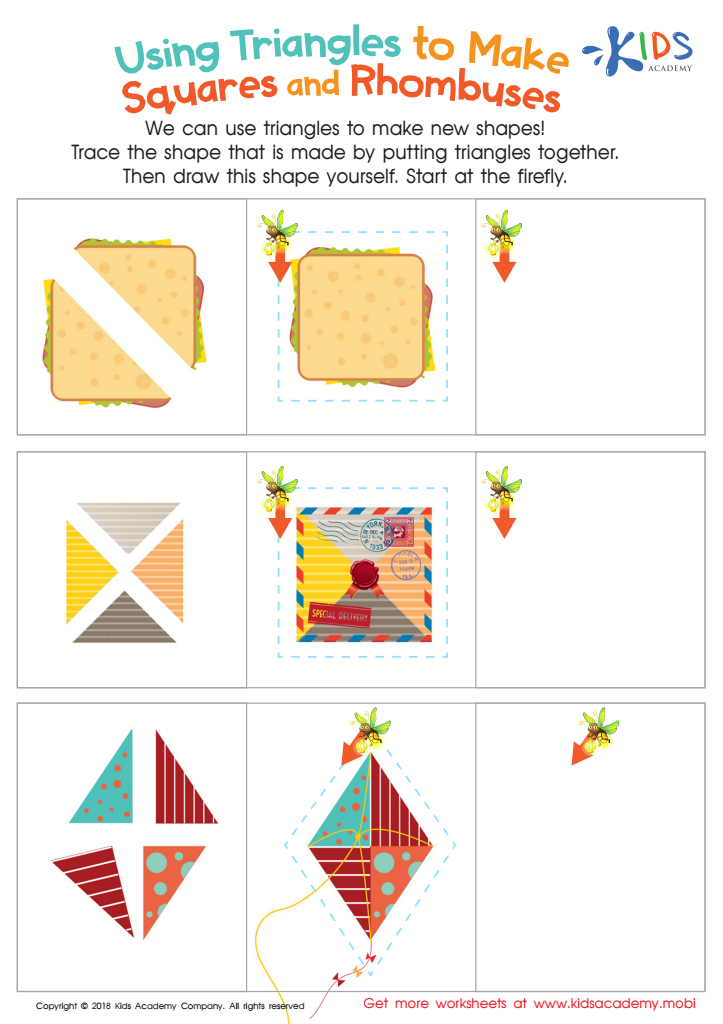

Using Triangles to Make Squares and Rhombuses Worksheet


Drawing a Triangle Worksheet
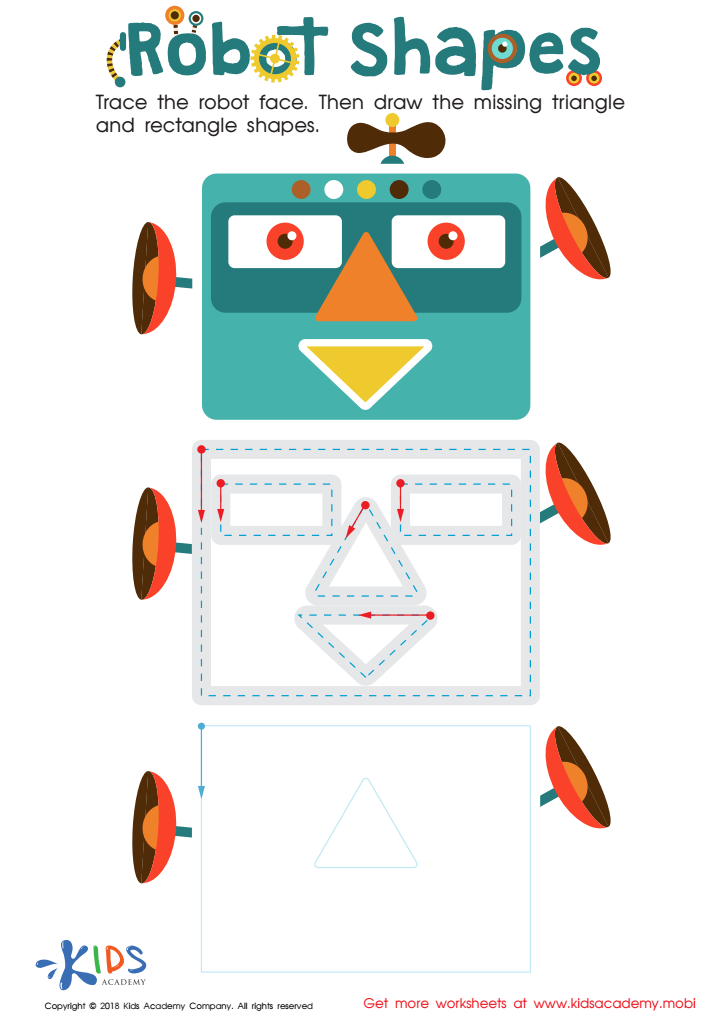

Robot Shapes Worksheet
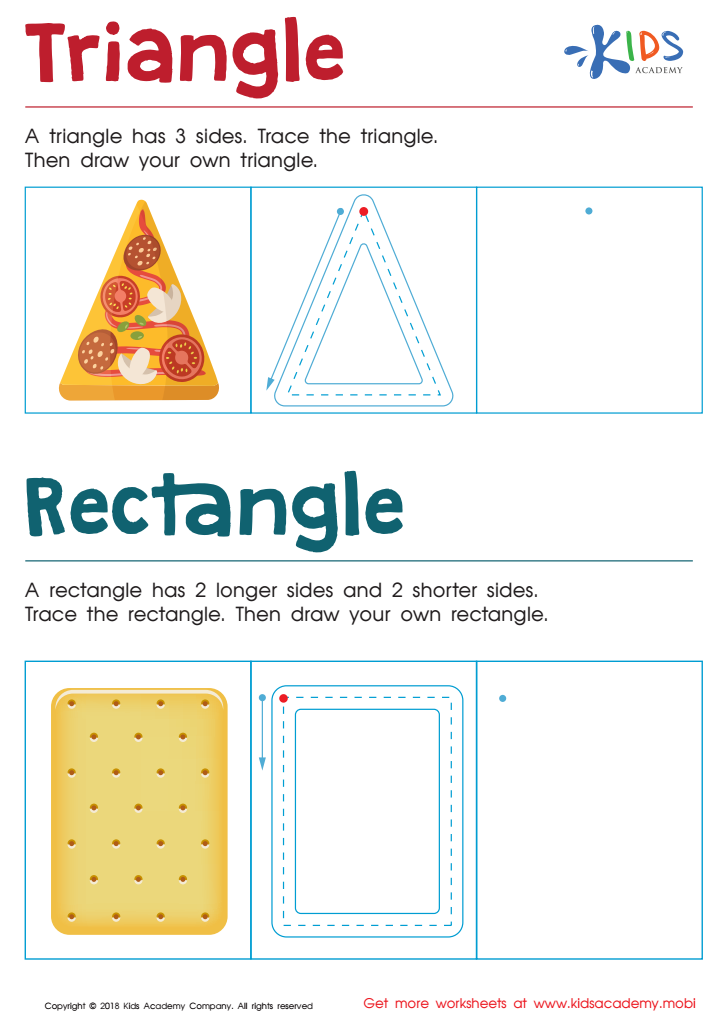

Triangle Rectangle Worksheet
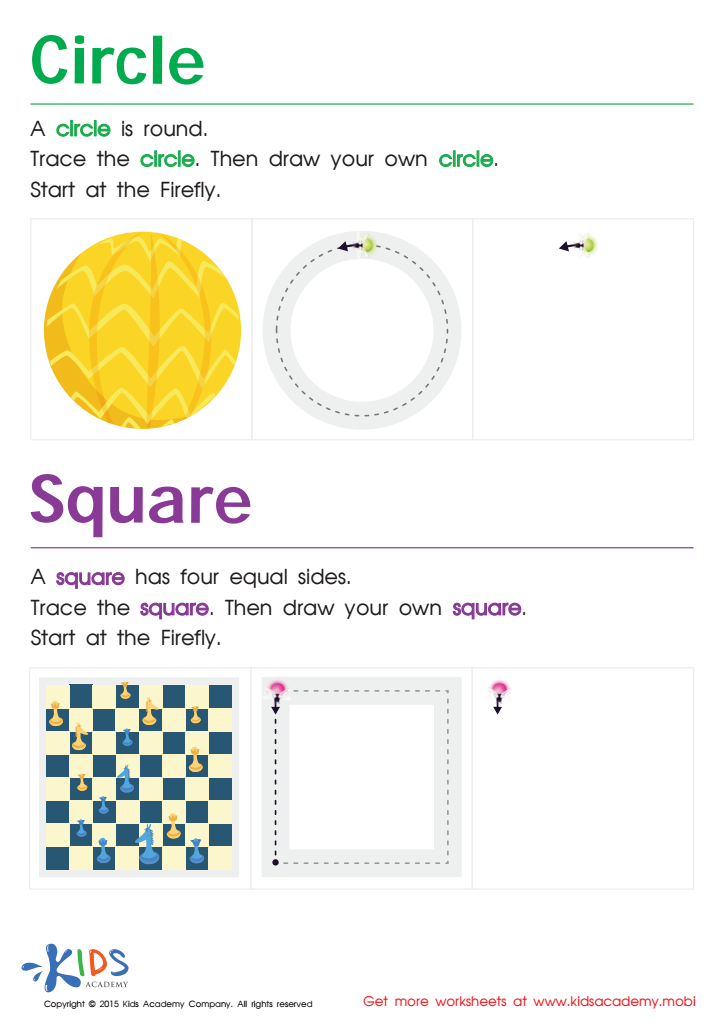

Trace And Draw a Circle And a Square Worksheet
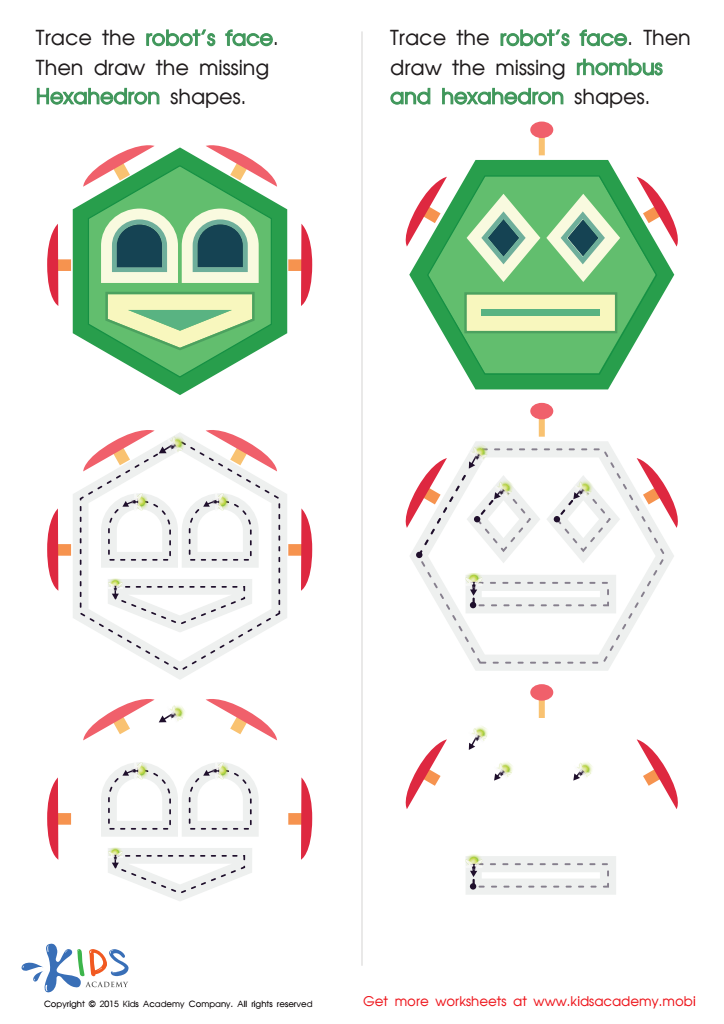

Practice Drawing Hexahedrons And a Rhombus Worksheet
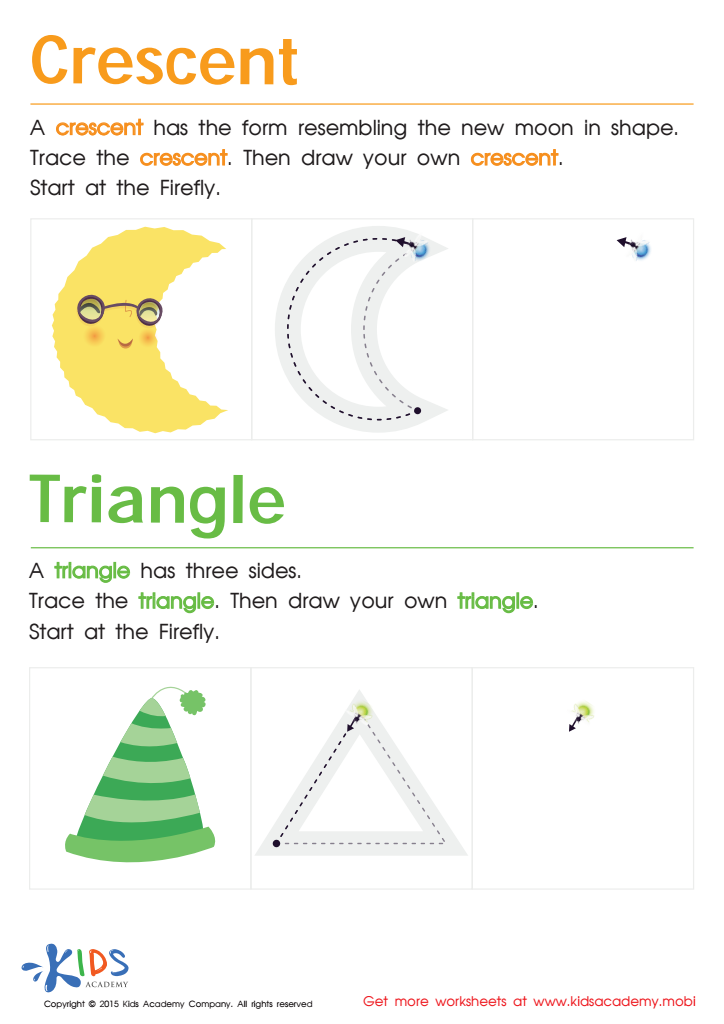

Learning to Draw Crescents And Triangles Worksheet
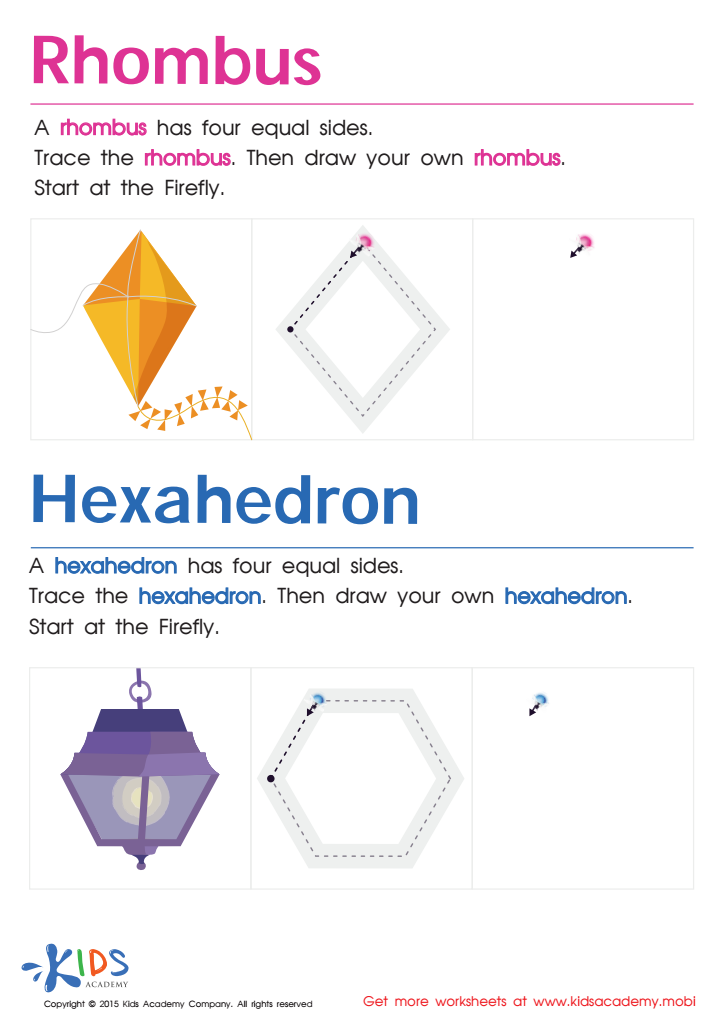

Draw a Rhombus And a Hexahedron Printable
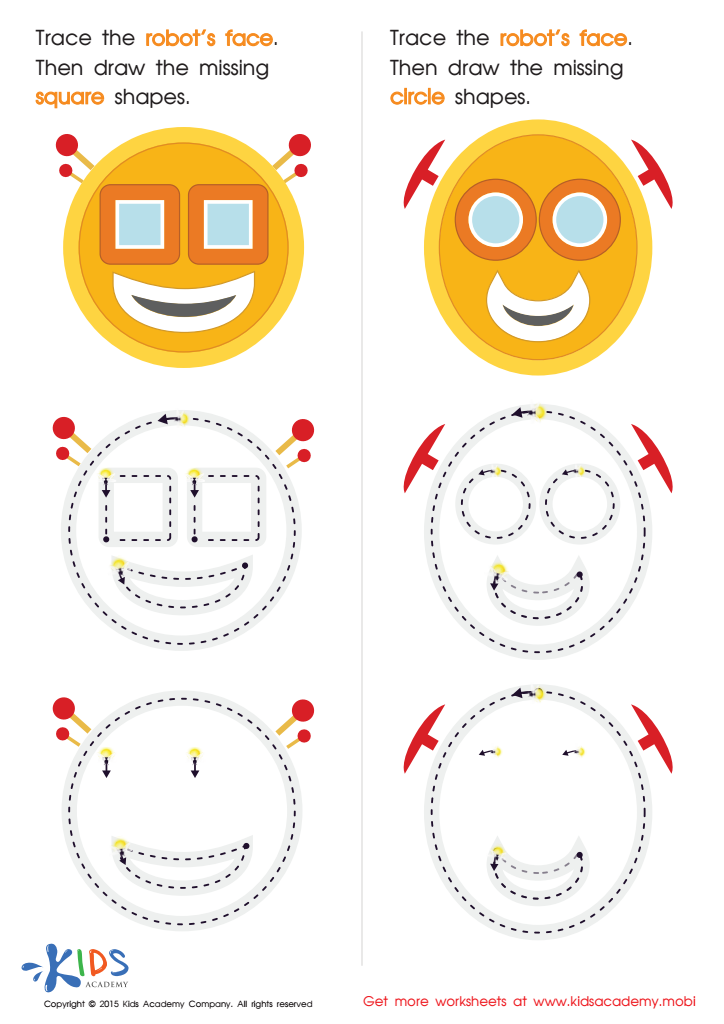

Practicing to Draw Circles And Squares Printable
Normal Tracing Shapes worksheets activities are a fundamental tool in the developmental journey of young learners. These seemingly simple exercises pack a powerful punch in the educational growth of children, especially in their early stages. Engaging in Normal Tracing Shapes worksheets activities offers a multifaceted approach to learning that supports various aspects of a child’s development, including motor skills, cognitive abilities, and perceptual skills.
First and foremost, Normal Tracing Shapes worksheets activities are instrumental in honing fine motor skills. As children trace over different shapes, they learn to control their hand movements and develop hand-eye coordination. This careful manipulation of pencils or crayons to follow outlines improves dexterity and prepares them for more complex tasks such as writing letters and numbers.
Moreover, these activities lay the groundwork for cognitive development. Understanding shapes is a foundational mathematical skill. Through Normal Tracing Shapes worksheets, children begin to recognize and differentiate between various shapes, an ability that plays a crucial role in spatial reasoning and geometry. They also start to grasp concepts of size, symmetry, and dimensions, which are essential for problem-solving and logical thinking.
Additionally, engaging in these activities enhances perceptual skills. Children learn to observe details, follow patterns, and identify similarities and differences among shapes. This heightened awareness and attention to detail are beneficial not only in mathematics but also in reading and writing, where distinguishing between letters and words becomes crucial.
Normal Tracing Shapes worksheets activities also foster creativity and imagination. After mastering the tracing, children often feel encouraged to draw shapes freehand, leading to artistic exploration and expression. This creative liberty can boost self-esteem and provide a sense of achievement.
In conclusion, Normal Tracing Shapes worksheets activities are much more than just tracing; they are a comprehensive educational tool that supports early developmental milestones. By incorporating these activities into a child’s learning routine, parents and educators can provide a solid foundation for academic success and lifelong learning.

 Assign to My Students
Assign to My Students




.jpg)










